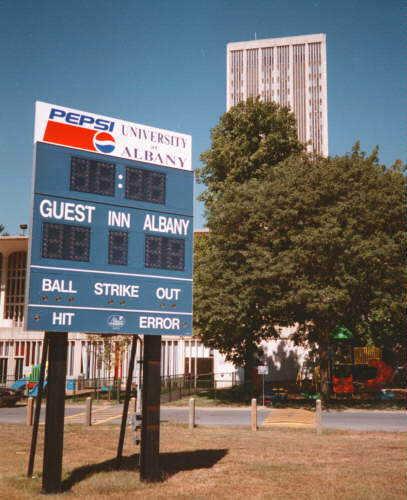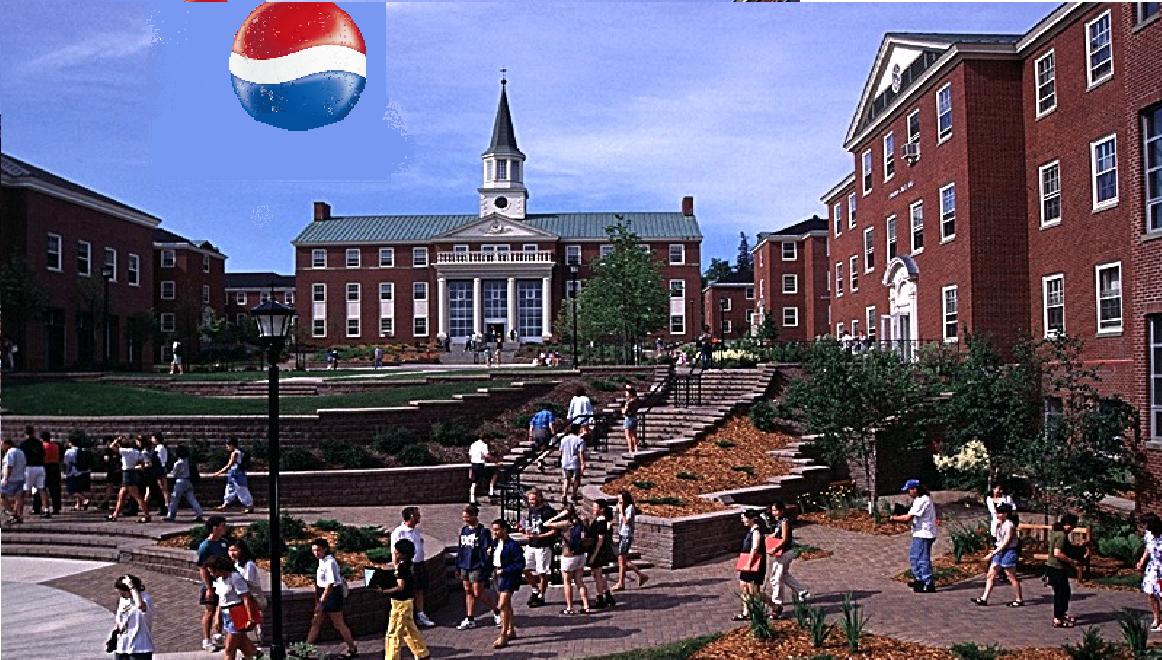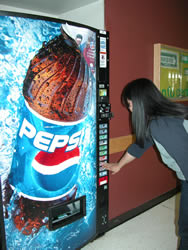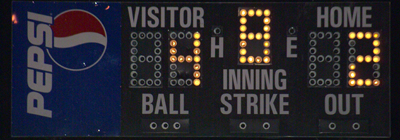The Influence Pepsi has on University and Public Schools

Pepsi in University
· Product chosen for sale in universities not because of quality but based on which company has the deepest pockets
· Choice is limited to one choice of product line based on which products are promoted and distributed by Pepsi
· Memorial, McGill, STU, UNB, University of Saskatchewan, and several other universities in Canada and the United States are sponsored or funded by Pepsi
· These contracts are signed based on donations, or funds that are donated by companies like Pepsi. So this means that Pepsi gets to sell their product and only their product in a certain university and in return they donate say $500 000 to the school.
· Pepsi is also advertised on the athletic gear, school newspapers and flyers, and around the school including at stadiums and scoreboards
· The idea of Pepsi in the classroom has been around as early as 1995 where in Ontario Pepsi bought the rights to sell their products exclusively in 115 schools around the province
· Special bonuses are sometimes given to schools and universities based on how much of the product is consumed. The more Pepsi purchased the more bonuses received
· Example: Penn State University signed a $14 million, 10-year contract with Pepsi-Cola in 1992, giving the beverage company exclusive vending and advertising rights on each of 21 campuses collectively totalling 70,000 students. Never had an agreement been so all-encompassing, combining athletics sponsorship, vending machines and fountain sales. The executive vice president and provost of Penn State justified the deal by pointing out the state legislature had cut the university’s $250 million budget by 3.5 percent.
· Even though these donations given by Pepsi are extremely generous they hurt more than they help as student’s choices are cut down and they are restricted to buy Pepsi products while at school.
· It is almost as though Pepsi is trying to use its outrageous wealth to buy students and to make profits off of them

 |   |
Pepsi in Public Schools
· The appearance of Pepsi in the public school system marked the vending machine area where children were able to have access to non-nutritious food whenever they so pleased
· Child obesity rates are at an all time high and child obesity is considered the number one cause of health problem in children
· Pepsi targeted public schools for the same reasons they targeted universities, for the wide range of students, and complete control of the high schools soft drink market
· Vending machines were filled with Pepsi products such as Pepsi, Mountain Dew, Sierra Mist, Lays chips, Dorititos, and several other unhealthy snacks
· Things changed for Pepsi as the obesity in children issue grew larger public schools started to take action
· Because children were not making the healthy choices at snack time the choices were now being made for them and Pepsi products along with all other soft drinks and snacks were banned from public schools
· However Pepsi fought its way back into public schools with the appearance of their Propel waters, their juices, and of course Gatorade
· Example: Deals with public school districts became popular in 1994. Pennsylvania’s Shaler Area School District signed a 10-year contract with PepsiCo. at an estimated value of $250,000. The district had not seriously considered exclusive deal offers by Coca-Cola and Pepsi-Cola until the school board voted to renovate the high school’s track and football stadium and was seeking funding for scoreboards. In addition to new athletic scoreboards and timing devices to be used for football, basketball and swimming, Pepsi promised a computer scholarship database, recycling revenue and commissions of $144,000 based on sales of 4,000 cases of Pepsi.
· In 1997, Jefferson County School District in Colorado gained national attention for setting a $10 million corporate sponsor goal, targeting hospitals, fast-food franchises, banks, newspapers, grocery stores and sporting good suppliers. In August 1997, the district negotiated an exclusive rights deal worth $7.3 million, giving Pepsi free reign in the district’s 140 schools. The deal included boosting vending machine commissions to 50 percent, a $48,000-a-year scholarship program, a student internship program and fund-raising opportunities for schools, such as selling Pepsi product coupons door-to-door.
Benefits for Schools
| Disadvantages for Schools
|
Outcome for Pepsi
-
Good public relations
-
Formation of brand loyalty
-
Market control leads to profit
-
Big opportunities for promotion